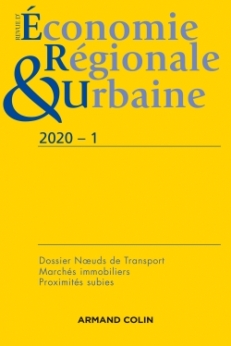
Revue d'économie régionale et urbaine (1/2020)
Pour acheter ce numéro, contactez-nous
Recevez les numéros de l'année en cours et accédez à l'intégralité des articles en ligne.
Bien que les projets de quartiers de gare (QG) se soient multipliés depuis une trentaine d’années, peu de littérature explore à ce jour la question des formes de valorisation des noeuds de transport, et des QG en particulier. La compréhension de ces formes de valorisation, c’est-à-dire le contenu des programmes urbains visant à valoriser le foncier, nécessite d’appréhender la valeur économique créée par ces projets, ainsi que sa répartition entre les différents acteurs de l’aménagement. L’objectif de cet article est de préciser les liens entre les formes de valorisation et la valeur économique créée dans les projets de QG, en se focalisant sur la phase aval du projet, c’est-à-dire sa mise en oeuvre opérationnelle. L’exemple de la transformation du QG de Metz permet de montrer comment la programmation s’écarte progressivement du projet initial afin de préserver la valeur économique anticipée par l’aménageur pour réaliser l’opération.
Over the past 30 years in France, railway station development projects (RSDP) multiplied. Although research on local economic effects of transport infrastructures and land value capture raises the issue of analyzing urban programming around transport nodes, RSDP in particular, research on this question remain scarce. To clarify urban programming around this type of infrastructure, it requires to understand economic value created by these projects, and its distribution among the different stakeholders that intervene in its development. In this paper, we specify the relationships between urban programming and economic value created in RSDP, by focusing on the downstream phase of the project, i.e. its operational implementation. The transformation of the RSDP of Metz will be taken as an example. The analysis underlines recurrent difficulties concerning urban projects but also highlights the specificities resulting from railway context. This article has two contributions. First, while the literature mainly views transport nodes as an opportunity for value creation, we claim that they may also be a technical and economic constraint in the realization of the project. Second, we specify the importance of the downstream phase to understand economic value created in RSDP. In particular, we show that urban programming of the RSDP of Metz progressively modifies in the downstream phase as a result of exogenous shocks and in order to keep enough economic value for the planner.